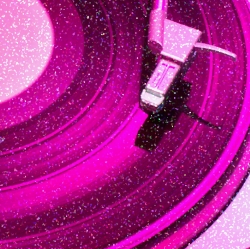
When Do We Need To Dither?
At its most basic level, dither is required only when reducing the number of bits used to represent a signal.
So, an obvious need for dither is when you reduce a 16-bit sound file to eight bits.
Instead of truncating or rounding to fit the samples into the reduced word size—creating harmonic and intermodulation distortion—the added dither spreads the error out over time, as broadband noise.
But there are less obvious reductions in word length happening all the time as you work with digital audio. First, when you record, you are reducing from an essentially unlimited word length (an analog signal) to 16 bits. You must dither at this point, but don’t bother to check the specs on your equipment—noise in your recording chain typically is more than adequate to perform the dithering!
At this point, if you simply played back what you recorded, you wouldn’t need to dither again. However, almost any kind of signal processing causes a reduction of bits, and prompts the need to dither. The culprit is multiplication. When you multiply two 16-bit values, you get a 32-bit value. You can’t simply discard or round with the extra bits—you must dither.
Any for of gain change uses multiplication, you need to dither. This means not only when the volume level of a digital audio track is something other than 100%, but also when you mix multiple tracks together (which generally has an implied level scaling built in). And any form of filtering uses multiplication and requires dithering afterwards.
The process of normalizing—adjust a sound file’s level so that its peaks are at full level—is also a gain change and requires dithering. In fact, some people normalize a signal after every digital edit they make, mistakenly thinking they are maximizing the signal-to-noise ratio. In fact, they are doing nothing except increasing noise and distortion, since the noise level is “normalized” along with the signal and the signal has to be redithered or suffer more distortion. Don’t normalize until you’re done processing and wish to adjust the level to full code.
Your digital audio editing software should know this and dither automatically when appropriate. One caveat is that dithering does require some computational power itself, so the software is more likely to take shortcuts when doing “real-time” processing as compared to processing a file in a non-real-time manner. So, an applications that presents you with a live on-screen mixer with live effects for real-time control of digital track mixdown is likely to skimp in this area, whereas an application that must complete its process before you can hear the result doesn’t need to.
Is That The Best We Can Do?
If we use high enough resolution, dither becomes unnecessary. For audio, this means 24 bits (or 32-bit floating point). At that point, the dynamic range is such that the least-significant bit is equivalent to the amplitude of noise at the atomic level—no sense going further. Audio digital signal processors usually work at this resolution, so they can do their intermediate calculations without fear of significant errors, and dither only when its time to deliver the result as 16-bit values. (That’s OK, since there aren’t any 24-bit accurate A/D converters to record with. We could compute a 24-bit accurate waveform, but there are no 24-bit D/A converters to play it back on either! Still, a 24-bit system would be great because we could do all the processing and editing we want, then dither only when we want to hear it.)
As another bonus, here’s a video on the subject…
Read and comment on the original article here.
Nigel Redmon is a musician, electrical and software engineer, and independent developer, specializing in digital audio signal processing applications. He has developed products for Line 6, Equator Audio, Alesis, Oberheim, and others.
